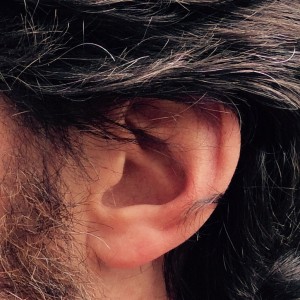My account of the ‘curative’ effect of meditation practice on my insomnia has been published on the Everyday Mindfulness website and can be found here:
Breaking the Cycle of Insomnia – Embracing the Arms of Sleep

My account of the ‘curative’ effect of meditation practice on my insomnia has been published on the Everyday Mindfulness website and can be found here:
Breaking the Cycle of Insomnia – Embracing the Arms of Sleep
Meditation is simple, but not easy. As proponents of the Middle Way we recognise that meditation is a valuable practice: it helps us to avoid delusion by making us almost instantly aware of our own relative lack of integration, and it can help us to make incremental progress with the process of integrating conflicting desires. So, we have a simple, valuable practice which we believe will be of benefit but one that is also not at all easy to do, and one that is not at all easy for many meditators to establish.
Setting the scene
This whole article is based on the assumption that it is better to meditate, than not. And if one meditates, I assume that a frequent, regular practice is better than irregular. The only justification I’m going to give has already occurred in the paragraph above! I’m also going to assume that the reader aspires to establish a regular meditation practice, but has not quite got there yet. This is a fairly common situation, as I understand it, and this is no surprise when you consider that meditation is usually a process of continually failing. We’re not well conditioned to being confronted with this!
There are plenty of articles out there on the internet that provide instructions on (for example) ‘How to establish effective habits’ and I don’t intend to replicate them here. Instead I’m going to work with an analogy from my own personal experience and explore the connections between establishing an exercise regime and establishing a meditation practice.
 It was only a few years ago that I established a regular, daily meditation practice, and I’ve maintained it ever since with only the occasional day off. I know I’ve got the determination and self-discipline to do something like that if I think it is worth pursuing, and I still think it is worth pursuing now – that’s why I’m keeping it up. However, trying to give helpful advice in this context is a bit like the adults who, in my church-going youth, told us teenagers to refrain from sex until we were married: easy for them to say, they were invariably already married! So, I’m going to use the example of something that I’m still working to establish, and that’s a regular running regime.
It was only a few years ago that I established a regular, daily meditation practice, and I’ve maintained it ever since with only the occasional day off. I know I’ve got the determination and self-discipline to do something like that if I think it is worth pursuing, and I still think it is worth pursuing now – that’s why I’m keeping it up. However, trying to give helpful advice in this context is a bit like the adults who, in my church-going youth, told us teenagers to refrain from sex until we were married: easy for them to say, they were invariably already married! So, I’m going to use the example of something that I’m still working to establish, and that’s a regular running regime.
A running commentary
Over the years I’ve obviously run – there were the enforced running activities in PE and games lessons at school. Later on, when the running was not mandatory, it did not happen particularly often. I used to cycle to get from A to B, and that seemed like sufficient exercise – I’m talking about the kind of exercise that gets your heart rate up, that strengthens your cardiovascular system. After gaining some weight during my undergraduate years at university, the influence of my more active postgraduate peers led to me exercising regularly at the university gym – and although I concentrated on lifting weights, I also felt obliged to mix that with some running, mainly using treadmills. It was not rewarding, although I did get fitter (and thinner) – but as soon as I started full-time teaching that also stopped. There were other demands on my time and I didn’t prioritise running (or any other kind of cardiovascular exercise) as it was inconvenient and painful.
In my early 30s, when my wife was pregnant with our son, I was rather stressed and had borderline high blood pressure – exercise was recommended by the medical professionals. I tried a few things, none of them stuck. In time my blood pressure went down and the pressure I felt to exercise also declined. Which brings me to the end of my 30s, roughly this time last year, when I had arrived at a point where I’d realised that there are all sorts of things one can do (or stop doing) to improve one’s well-being, and regular physical exercise was probably the final one that I was dodging.
 I settled on running for its simplicity. It can be done anywhere, at any time, alone or with company, and requires minimal specialist equipment – and I already had suitable footwear. The financial implications were practically zero, which helped. The technique, too, is simple: left, right, left, right, etc. I’m sure you know: it’s a bit like walking, but faster. My body was already reasonably well-prepared for it: I’ve never been slimmer, my knees were still in good working order and I was otherwise in good health. Just not at all fit.
I settled on running for its simplicity. It can be done anywhere, at any time, alone or with company, and requires minimal specialist equipment – and I already had suitable footwear. The financial implications were practically zero, which helped. The technique, too, is simple: left, right, left, right, etc. I’m sure you know: it’s a bit like walking, but faster. My body was already reasonably well-prepared for it: I’ve never been slimmer, my knees were still in good working order and I was otherwise in good health. Just not at all fit.
Now, just over a year later, I run regularly but not frequently – at least once a week. I am able to run at least 10 km without stopping, in less than an hour. I have no idea if that’s “good”, but it’s where I’m currently at. I haven’t injured myself, and I’ve kept it up through all the (admittedly mild) seasons, and I want to continue. I don’t do it for company, as I run alone, and I don’t do it to win, as I’ve never entered any kind of race. So how over the past year have I gone from basically no fitness to this, and what has it got to do with meditation? Read on through the following six points…
1. Just do it, and really do it
 I did a lot of thinking about running. Not much talking, but a fair bit of listening. I pondered the best time, place, clothing, technique and so on. But you’re not actually running unless you’re actually putting one leg in front of the other, and probably working up a sweat at the same time. In the analogy that I’m making, meditation is much the same.
I did a lot of thinking about running. Not much talking, but a fair bit of listening. I pondered the best time, place, clothing, technique and so on. But you’re not actually running unless you’re actually putting one leg in front of the other, and probably working up a sweat at the same time. In the analogy that I’m making, meditation is much the same.
There is a lot of advice out there, probably too much. As many different opinions and options as there are people offering those opinions and options. But at some point you’re going to have to sit down (or lie down, or stand, or walk) and meditate. So do it, pick something simple and go with it, and don’t dress it up with a lot of unnecessary accessories.
2. Be conscious of self-consciousness
Maybe this is something that is more of an issue for me than it is for others, but at first I felt very self-conscious about being seen to go running. I didn’t see myself as ‘a runner’, and I had pretty much no experience of running. What if I was doing it wrong? I found a way around this – simply by going running at 6am on Sundays, when I was pretty much the only person out on the streets. It also helped that it was dark in the autumn and winter when I was getting established.
You may find the same thing with meditation – I certainly did. It helped me when I was starting to meditate to do it at a time when I knew that I wouldn’t be interrupted – so first thing in the morning, before my son had woken up. It also helped to have a friendly guide who you won’t feel ‘judged’ by – for me it was impersonal guided meditations via my phone, but for you it might be a meditation teacher in person. In time the feeling that I had to look and act like ‘a meditator’ has faded away.
3. Establish a regular time
I’ve already mentioned that I found a time that worked for me, both for running and for meditating. And for both it was first thing in the morning. Of course, this may be different for you, but don’t fool yourself with ideas like ‘But I’m not a morning person’. You might surprise yourself. There was a time that I thought I would simply die if I did not immediately eat breakfast when I woke up. Turns out that’s not true, but I only found out by actually doing it! The main thing is that you have a time when, in the usual routine, it is time to meditate: it is much easier to make it a (virtuous) habit then.
In terms of duration, I’ve always used a timer. When I started running I’d take a timepiece with me, as I’d have alternate between running and walking and without a timer I’d end up walking for a long time and running for only a short time. Now that I can run without stopping I leave the smartphone at home, but afterwards I record in my diary how far I ran and how long it took me (roughly). It appeals to the part of me that likes data, and provides a more objective way of tracking what I’ve done. As for how long, I’d just run until I felt that I really couldn’t run any further.
 With the meditation practice, as I said I started with guided meditations so they were of a fixed duration. I don’t often use guided meditations now, but I do use a timer. Mainly because sometimes there are time constraints (for example, I’ve got to get to work on time). If there aren’t any constraints, then I meditate until I feel like I can’t meditate any more. I still have a timer running when I meditate, in fact I use the ‘Insight timer’ app on my phone. I don’t meditate for points (or to ‘win’ at meditating) but there is something satisfying about having it tell me that I’ve meditated for 222 consecutive days (or whatever).
With the meditation practice, as I said I started with guided meditations so they were of a fixed duration. I don’t often use guided meditations now, but I do use a timer. Mainly because sometimes there are time constraints (for example, I’ve got to get to work on time). If there aren’t any constraints, then I meditate until I feel like I can’t meditate any more. I still have a timer running when I meditate, in fact I use the ‘Insight timer’ app on my phone. I don’t meditate for points (or to ‘win’ at meditating) but there is something satisfying about having it tell me that I’ve meditated for 222 consecutive days (or whatever).
4. Establish a regular place
The analogy here is a bit weaker, but it still broadly works. There are various constraints on the routes that I run – they usually need to start and end at my house, they need to be suitably challenging (right amount of uphill and downhill), the fewer roads I have to cross the better, sometimes there needs to be the option to quit part way through. The main thing is that I have favoured routes which I tend to stick to, but I don’t always run the exact same route in the exact same direction. Variety, here, being the spice not the main ingredient.
In my analogy, the running route becomes the meditation location. It has to be convenient and conducive to the meditation you’re doing; you don’t want to be easily interrupted, but you’ve got to accept that there will be times when you can’t meditate in your preferred spot. My preferred location varies to fit the circumstances, but it helps to have a place that is ‘where I meditate’. In the winter I usually roll out of bed (in the dark) and sit next to my bed. In the spring and autumn, when it is lighter and warmer, I get up and go downstairs and sit by the patio doors. If it is summer I sit just outside on the decking. But there are times when I mix it up: for example, I might put on gloves and a hat and sit outside in the garden in the winter.
 5. When things don’t go to plan…
5. When things don’t go to plan…
When establishing the running I had a regular time, regular routes, etc. but of course things don’t always go to plan. There were times when, for example, I’d be ill on a Sunday morning and not capable of getting out of bed, let alone running 5 km. Or maybe I’d be OK, but my son was ill and needed more attention than normal. Or I’d run a few miles then feel the need to urgently visit the toilet when the only real option was to run back home again. These are the occasions to be open to the idea of being flexible, of not being too rigid. A few weeks ago I had a huge headache on Sunday morning, but it had gone by the evening and so I ran instead in the evening. This might sound obvious, but it needs saying: it is so easy to say ‘Well, my habit is to run on Sunday morning and if I can’t run on Sunday morning then I won’t run at all’.
Astute readers will have noticed that there will be a clash in my schedule on Sunday mornings, as my habitual meditation time coincides with my habitual running time. Do I, perhaps, see the running as a meditation, to put one foot in front of the other and to really feel myself placing and lifting my feet, to follow the deep inhalations and exhalations from my diaphragm? Or do I just meditate first and then go out and run. Or maybe I run for a while, sit down to meditate on a park bench, then run back home again. I’ll leave that as something for you to ponder.
6. You’re not alone
My running is a solitary activity. I have always done it alone. But have I really? I sometimes talk to friends who also run about their running: why they do it, how they do it and so on. When I’m out running, even when it’s before 7am on a Sunday, I pass other runners: some wave, some give a dignified nod, with some it is just a knowing look. But there’s a kind of community in that – especially when you start to recognise them week after week.
 You will probably get stuck with your meditation. At the point where I got stuck I was pretty much going it alone. However, through some connections that I’d made with more experienced meditators (via the internet) I was able to get un-stuck. They didn’t remove the blockage for me, but by discussing their own experiences and how they found a way through I was able to do the same thing myself, in time. I’ve also been able to return since to the things that were causing me to get stuck, and they now look very different to me. What was a source of frustration in my meditation has become something more helpful.
You will probably get stuck with your meditation. At the point where I got stuck I was pretty much going it alone. However, through some connections that I’d made with more experienced meditators (via the internet) I was able to get un-stuck. They didn’t remove the blockage for me, but by discussing their own experiences and how they found a way through I was able to do the same thing myself, in time. I’ve also been able to return since to the things that were causing me to get stuck, and they now look very different to me. What was a source of frustration in my meditation has become something more helpful.
This probably depends a great deal on your personal preferences, but it may be that you’ll find it easier to meditate regularly if you are involved with other meditators. It might be someone more experienced who can offer guidance, or it might be someone similarly inexperienced who is willing to muddle through with you, and to share encouragement. My wife has been meditating for significantly longer than I have. We often sit together in the evenings. It really is quite a different experience to sitting in meditation on my own, and it means that sometimes when I don’t feel like meditating there is encouragement from her to take a break from whatever else I’m doing and join in.
 In terms of being part of a larger group – I’ve never done that with running, but I have friends who keep up a regular running practice mainly because they ‘have to’ as part of a group they’ve joined. Similarly, I wasn’t part of a meditation group when I was establishing a regular practice, but for others I know that is their way of reminding themselves of their intention to regularly meditate. I’ve already mentioned the Insight timer app – this also has a social side, in that it can show you other people using the app, all over the world, connecting you to a rather loose community of meditators. My feelings about this vary, but generally I see it as being akin to my very low-key interactions with the other runners that I meet when I’m running alone.
In terms of being part of a larger group – I’ve never done that with running, but I have friends who keep up a regular running practice mainly because they ‘have to’ as part of a group they’ve joined. Similarly, I wasn’t part of a meditation group when I was establishing a regular practice, but for others I know that is their way of reminding themselves of their intention to regularly meditate. I’ve already mentioned the Insight timer app – this also has a social side, in that it can show you other people using the app, all over the world, connecting you to a rather loose community of meditators. My feelings about this vary, but generally I see it as being akin to my very low-key interactions with the other runners that I meet when I’m running alone.
In conclusion
The point in all this is that establishing a regular practice of anything is going to take some effort, and there are things you can do to try and make the establishment more successful. I can offer various points from my own personal perspective, which might be broadly helpful but they probably aren’t going to be a perfect fit to your own personal situation. So what I’m recommending is to draw on your own experience. The things I’d encountered whilst establishing a regular meditation practice, in particular the things I’d learned about my own inclinations and preferences, could be applied to new virtuous habits that I’m trying to establish, hopefully making the process much easier.
 If you’re trying to establish a regular meditation practice then I won’t wish you good luck – I don’t even know what that really means, other than wishing you well in your venture. Instead I will conclude by giving you this encouragement in the style of one of history’s most famous meditators (The Buddha):
If you’re trying to establish a regular meditation practice then I won’t wish you good luck – I don’t even know what that really means, other than wishing you well in your venture. Instead I will conclude by giving you this encouragement in the style of one of history’s most famous meditators (The Buddha):
“Such is a regular meditation practice. It can be established. It has been established.”
Follow this link to read my previous meditation blog post: Meditation 16: Conscious listening.
Index of previous meditation blogs
Photo credits

I believe that every human being needs to listen consciously in order to live fully — connected in space and in time to the physical world around us, connected in understanding to each other, not to mention spiritually connected, because every spiritual path I know of has listening and contemplation at its heart.
–Julian Treasure
For the past few days I’ve had the luxury of time, and I’ve spent an hour of that time every day consciously listening. My sense of hearing has been noticeably active the entire time I’ve been awake, but for an hour every day I’ve been deliberately focusing on sounds and proliferating the meaning that I make from those sounds, to the exclusion of all other mental and physical activity.
Call it ‘meditating on sounds’ if you wish, but it is quite a different practice to the more usual method of meditating on the breath. Martine Batchelor highlights the key point in her book ‘Meditation for life’:
Concentrating only on the breath or the body, you can sometimes become too locked inside yourself. Listening to sounds is a wonderful meditation that opens you to the world around.
So, with that in mind, in this blog post I will describe what this formal meditation practice involves, why it might be something that you should engage with, and how the experience went for me this morning when I practiced it.
Sitting and listening
The conditions for the practice are straightforward enough: find a safe location where you won’t be disturbed, and plan to remain there, eyes closed, for a specific period of time. For the first quarter of that time you consciously listen to sounds within your body, internal sounds. For the second quarter you consciously listen to sounds coming from immediately around you. For the next quarter you consciously listen to sounds coming from further afield, and for the final quarter you just listen to whatever presents itself to your awareness. Forget about the fourth stage if you prefer.
 Usual mediation instructions apply… Get prepared: stick with one posture that you’re comfortable with (standing, sitting, lying – not walking, as you’ve got your eyes shut!), eliminate preventable distractions (turn the phone off, make sure someone else can attend to the kids, do not drive or operate heavy machinery) and if you’re anxious about strictly marking time then use an audible timer of some kind (such as the Insight timer app).
Usual mediation instructions apply… Get prepared: stick with one posture that you’re comfortable with (standing, sitting, lying – not walking, as you’ve got your eyes shut!), eliminate preventable distractions (turn the phone off, make sure someone else can attend to the kids, do not drive or operate heavy machinery) and if you’re anxious about strictly marking time then use an audible timer of some kind (such as the Insight timer app).
During the meditation: keep your eyes closed and your body still, remember that your intention is to listen to sounds, and if you notice that your mind has wandered away from the object of your meditation then recall your intention and get back to the object without giving yourself a hard time.
Afterwards: spend a few moments in quiet contemplation, to allow yourself to digest the experience of conscious listening, have a good think if you want, and don’t forget to open your eyes again before you move on to whatever’s next.
Why consciously listen?
The best reasons that I can give for engaging in this practice are explained beautifully by the ‘sound consultant’ Julian Treasure in his TED talk called ‘5 ways to listen better’. In brief, then, he reminds us that the act of listening (of making meaning from sounds that we hear) is a mental process that employs techniques like pattern recognition, differencing and a host of other filters. These aren’t really categorised as cognitive biases, but they do invisibly shape our perception of our surroundings and, as such, we can arguably make better decisions if we’re better aware of the processes that are shaping our worldview.
Julian Treasure’s argument is that in an increasingly noisy world we are losing the ability to listen consciously, and that this is not a trivial problem as listening is our access to understanding our situation in the world and our relationships with others. Treasure goes on to describe five simple exercises that you can do to improve your conscious listening, and the meditation on sounds that I’m advocating here includes most of the useful aspects of all five. I highly recommend watching the full talk, it’s under eight minutes long.
Towards the end of the talk he admits to not knowing how to get this practice more widely adopted, but that we need to find a way. Perhaps it is something that could be taught in schools? I’m a teacher, and I’ve often shared Julian Treasure’s talks with my Sixth Form tutor group because he’s such an engaging speaker with an important message to get across – but perhaps I could be doing more to help the students engage with the practice of conscious listening, at the very least to appreciate what quiet might mean in our increasingly noisy world.
So, I’m suggesting that if this integrative practice appeals to you then try it out. If you’ve done it before, try it again. If it doesn’t appeal to you, try it anyway… it doesn’t have to be complicated or take up a lot of your time, it’s the sort of thing you can do in queue at the supermarket. Notice that the awareness that you develop in this practice can be brought into conscious listening during conversations, in your interactions with others. Then, if you feel like you’re benefiting from this practice, please share it with someone else. Make a difference in your own web of connections, as that’s all you can realistically do!
Appendix – Journal notes from this morning’s meditation
Read on only if you’re interested in my own personal experience of the meditation on sounds from this morning. I sat on a cushion on the decking in the garden outside my back door, and set the Insight Timer app on my iPad to make a pinging sound once every fifteen minutes for a total of one hour. When I finished I moved back indoors and sat at the laptop to type up my recollections from the meditation, which are pasted in below…
Part 1 of 4 – Attention on internal sounds
The familiar ‘ringing’ in my ears. High pitched, continuous. Unchanging pitch. Higher pitch than any of the external sounds coming in. Unchanging volume. Does it come more from one side or the other? Neither, it seems to be in the middle. Same place as the internal monologue. Interminable. And always in my head, between my ears – never in any other part of my body.
Mind wanders, drifts away with thoughts. When I realise that I’m not focusing on the internal ringing sound I notice that I was not aware of it. Trying to use this effect to make it ‘go away’, to deliberately mask the ringing by thinking thoughts, doesn’t have that effect. The ringing is still there in the background, behind the internal voice of my thoughts. Why don’t I perceive my internal ‘vocal’ thoughts to be a sound, whereas the ringing is perceived as a sound?
 Part 2 – Attention on nearby sounds
Part 2 – Attention on nearby sounds
Ping. Nearby on my left, the bell sound from the iPad, telling me that 15 minutes is up. Nearby sounds… the birds in the garden are the most obvious. Most prominent is the robin. It is nearby, higher up, slightly to one side. Never the same phrase twice, but always a sweet melody. Phrase, then a pause of about the same length, then another phrase and so on.
Later I notice, sometimes, that there is another robin singing in the pauses, further away and on my other side. There are fainter sounds from blue tits, reedier and not melodious. I can name the birds from their songs, should I be naming them or listening to them? It seems automatic, to name them from the sounds. Feeling a sense of achievement in this ability. The pigeons, not vocalising but noisily flapping their wings in the newly leaved branches of the tree above. Probably visiting their nest that they’ve built high up in the tree. Occasional flapping and fluttering, the robin sings on.
Laughter from my son in the house behind me, long unselfconscious giggling – he is probably still reading that Tom Gates book. What do I do that makes him laugh like that? Other domestic sounds from the house: the ironing board opening up, the electronic peep of the iron when it is switched on, again when it reaches working temperature. Some inaudible speech, a conversation.
Aware in the silences that I sometimes notice the internal ringing, wonder if I should be paying attention to the gaps between the birdsong phrases? That’s one of the big differences between these nearby sounds and the internal ringing. That and the directionality, and obviously the externality. The bird sounds sound like they are ‘out there’.
Ambulance goes up the street in front of the house, siren sounding. Should I classify the traffic noise as nearby or far? It’s probably the same distance away as some of the birds. Tyre noise is like a swooshing, I can tell if they’re going up the road or down the road. (Afterthought: I didn’t notice the clanking of the loose drain cover as the cars passed over it). Occasional toot of a horn from the crossroads down the road.
Interrupted by the song of a blackbird, from further away directly in front of me. I picture it sitting on the TV aerial of the flats beyond the end of the garden. It sounds different to the robin. I’m naming bird species again. The song is more reverberant, I imagine it being reflected from the wall along the alleyway.
Part 3 – Attention on far away sounds
Ping. Loud bell sound, slightly startling. Straight away – jet aircraft a long way overhead, background but loud. As it fades the two-tone parp-parp of a train from a mile or so away. Funny that these two far away sounds should be so obliging as to happen within 10 seconds of start of the ‘far away’ section of this meditation. The sound of the jet plane very slowly fades, merging into other nearer sounds.
Then struggling to notice any other ‘far away’ sounds over the road noise, a motorbike engine, cars braking as they approach the traffic lights. Again wonder if these are classified as near or far.
Another plane sound, high up but to the left. This one’s a prop plane, not a jet. Identifying and discriminating again. The local airport does do both jets and props. Thumping sounds from my son playing a jumping around in the lounge at the front of the house.
A boiler starts up – could be ours or the neighbours. It’s ours, someone’s probably having a shower – can hear the boiler, but not the showering sounds as the bathroom’s round the front of the house and I’m at the back. Notice that there are fewer bird sounds, perhaps the robin’s flown elsewhere and the pigeon has settled on its nest.
Part 4 – Wide open attention on any sounds
After this ping I notice another jet plane sound from directly overhead. Funny – the last one I heard was after the previous ping, are they every hour? No, it was fifteen minutes ago. The time’s going by so quickly, why did I think it was an hour ago?
My breathing has become very gentle and calm, not really making any noticeable sound as I breathe in and out through my nose. I’ve not been at all focused on my breath – not like when I’m running and its the major focus of my attention. Yet somehow I’ve managed to stay alive.
Hard to recollect much from this final section. Certainly felt a sense of space, of not being in my head whilst still getting engrossed in discursive thoughts. Time going by very quickly, slightly surprised by the final ping and immediately a feeling of ‘disappointment’ that I hadn’t been ‘doing it right’ for the past 15 minutes. What would I journal about? Dismissed it. The conscious intention was to just see what happened when I listened to anything for the final 15 minutes. And a kind of ambiguous aware but not aware state was what happened.
Follow this link to read my previous meditation blog post: Meditation 15: What if I’m doing it wrong?
Index of previous meditation blogs
Picture of listening man with cap on bench by Skitterphoto. License: CC0 Public Domain (courtesy of Pixabay.com)
Pictures of my left ear and the robin in my back garden are all my own work. License: CC0 Public Domain
 Have you ever thought ‘What if I’m doing it wrong?’ We’ve all had that feeling when learning something new. This is no less true when the new activity is meditation. We may have reached a point where externally everything is polished – we’ve ‘found our seat’ and can meditate comfortably for as long as we would like to – but then another level of difficulty opens up because we are more sensitive to what’s happening ‘inside’.
Have you ever thought ‘What if I’m doing it wrong?’ We’ve all had that feeling when learning something new. This is no less true when the new activity is meditation. We may have reached a point where externally everything is polished – we’ve ‘found our seat’ and can meditate comfortably for as long as we would like to – but then another level of difficulty opens up because we are more sensitive to what’s happening ‘inside’.
If that new practice is one of the more open styles of meditation, such as ‘just sitting’ or recollective awareness meditation, there are not the usual meditation instructions to fall back on. It is much more likely that a novice will be worrying, ‘What if I’m doing it wrong?’ when there is a fundamental lack of specific guidance on what it means to be doing it right. When I think I’m doing it wrong, then I’ve assumed that there are certain desirable results (meditative attainments) that are supposed to come from doing it right. By doing it wrong, I worry that I will be denied these results. Is it at all helpful for me to be concerned about this? Have I completely missed the point? Or maybe there is no point – in which case, why am I even doing this?
As I understand it, in the traditional schools of Buddhist meditation one’s progress along the path is marked by meditative attainment, which is typically a matter that is kept between you and your teacher, someone more accomplished and better integrated than yourself. However, Jason Siff writes (in Thoughts are Not the Enemy, Shambhala 2014, p179), ‘I believe attainments are unnecessary concepts. They can easily derail a well-functioning spiritual path and turn it into a dysfunctional nightmare. … Some attainments may be real. Now, when that is the case, there is no advantage to making it known. Someone who really has succeeded in diminishing the force of her desires and ill will, and has substantially reduced her self-importance and pride, would be content being a nobody’.
People, myself included, first come to meditation with the expectation that their hard work will be rewarded. It’s part of our culture in the Western world, where the Protestant work ethic is alive and well despite increasing secularism. New meditators will also expect their time to be productive – even their leisure time: ‘work hard and play hard’. We can’t help but bring our cultural conditioning to new activities, meditation too, and probably without even consciously thinking about it we believe that doing it right will ensure a more efficient path to being productive. But productive of what?
The recent presence of mindfulness in the media, coming mainly from the growth of mindfulness based stress reduction programmes, means that it would be easy for those running meditation groups to sell meditation to newcomers as simply a method for solving problems – to cure whatever ails you. Stephen Batchelor (in After Buddhism, Yale University Press, 2016) points out that ‘…treating meditation as a technique for solving the problem of human suffering, however, is nothing new. Buddhism itself has frequently lapsed into this way of thinking and, in some schools, uncritically endorses such an approach. … This is no different from a sales pitch for an effective diet: if you follow this regime for X amount of time, it is certain that you will lose X amount of weight.’
The beginning meditator will look to veterans for reassurance that they’re doing it right, and that doing it right does have some positive benefits. We are, like it or not, driven by goals. However, there is the possibility that a well-practiced meditator has completely missed the point. Despite their accomplishments in certain meditative techniques they may have failed to have become a more integrated person, or, more generously, their integration may be radically asymmetrical with their desires well integrated, but their beliefs are poorly integrated as they are still operating under the assumptions of ideological dogma.
What light can recent developments in psychology shed on this topic? Conceptualising meditation in our minds as a task to be done correctly is a very heavily left hemisphere dominated approach: understandable in our current culture, but not a sign of good integration between the narrowly-focussed task-oriented language-producing aspects of our minds and the complementary widely aware integrating nonverbal aspects. Iain McGilchrist’s thesis (in The Master and His Emissary, Yale University Press, 2012) is that our current Western culture is the product of our left hemispheres pretty much going it alone (in his analogy, the Emissary has usurped the Master), and, if there is any hope of saving our sick society, it will involve a reintegration of the left and right hemisphere modes of being in the world, where the task-oriented narrow-focus modes of our left hemispheres are integrated by the wider awareness and more fluid modes of our right hemispheres.
I appreciate this from personal experience as much as anyone. I’ve read enough books, listened to enough podcasts, watched enough videos and conversed with enough people. Which of these authorities am I hoping will be able to reassure me that I’m doing it right? As is often the case, there are about as many different opinions as there are people expressing them, and without some kind of absolute conviction that one of them is The Truth there’s a danger of flipping to the other extreme (of relativism) and assuming that all of these different methods are equally useful to me.
What I’ve found so far in my practice of meditation (which most commonly involves sitting quietly, with the intention to meditate) is that however much I want do it right, in fact I can’t do it wrong. Whatever progress occurs, it is arrived at indirectly, and if I assume I know what my so-called correct technique is aiming to achieve then I’m fundamentally limited by those assumptions. By sitting quietly and treating my thoughts kindly – not cutting them off or drowning them out – the noisy, narrowly focussed left hemisphere has a chance to settle of its own accord, and then the right hemisphere’s openness to new experience can make itself known. It isn’t a battle to subjugate the left hemisphere (that’s the sort of plan-driven technique that the solo left hemisphere would derive) but a space in which the right hemisphere can integrate with the left within its wider awareness.
To conclude, a quote and more questions. In After Buddhism, Stephen Batchelor suggests that ‘…meditation is more usefully compared to the ongoing practice of an art than the development of a technical ability.’ Still, when cultivating an artistic meditative practice, people can also worry about doing it wrong, however cultivating a sensibility is a very different thing to drilling the correct practice of a technique. Is there some way of adapting the reassuring but dangerous phrase ‘you can’t do it wrong’ so that it reflects this view of it being the cultivation of an art rather than the execution of a technique?
Ill-will, or hatred, is not that different from sense-desire really. It’s just positive desire turned the other way round so as to reject someone or something. Just as there’s an incremental progression from sense-desire to love, there’s a similar progression from hatred to wisdom. You don’t have to be an obviously hate-filled person to come across ill-will as a hindrance in meditation, just have a critical tendency which leads you to dwell in a slightly obsessive or unbalanced way on what’s wrong and ought to be put right.
So, having distanced myself slightly from stereotypes of hatred, I’m now able to admit that ill-will is my biggest hindrance. In my case it consists almost entirely of sitting in meditation thinking of things I should have said, or might say, to people so as to show they’re not entirely correct about things. For a long time, my experience of trying to practise the Middle Way has often consisted of having subtle arguments with both sides representing the extremes instead of just one side – which is sometimes conducive to a bit of a siege mentality. Perhaps it’s only since the society started that I’m beginning to find it easier to think primarily of the Middle Way as offering something positive: but I’m aware that I still have a tendency to over-emphasise the negative.
One way of trying to manage ill-will is just to reflect that the object of your aversion has too much power over you. Your aversion itself doesn’t want that, so the energy it consists in may thereby be directed into less obsessive channels. After all, if you hate something, or someone, why are they worth so much attention? In fact, giving that b*****d so much emotional energy (whoever it is) is a lot more than he’s worth! That’s one reason why, if you hate God, strong agnosticism is a much more effective way of “getting your own back on him” than atheism or anti-theism. People who hate God tend to spend a lot of time thinking about him, and in the process give him a lot more reality. Aversion taken to a rational conclusion tends to lead you into wisdom, where you start criticising your beliefs about the hated object rather than just the object. Nevertheless, subtler forms of hatred may still hang around such an intellectualisation, and you tend to discover these when you meditate.
Another relatively effective approach to ill-will in my experience is merely to focus on one’s physical experience. Hatred (especially in the form of anger) has a very narrow mental focus, and just remembering that you have a breathing, feeling body can take you a long way out of it. That’s obviously why taking deep breaths is a popular way of controlling anger.
Alternatively, you can reflect on the object of your ill-will so as to give that object a wider meaning than the narrow one you are probably obsessed with. When we hate someone, we tend to think of them only in one sort of situation, having one sort of characteristic, or saying one sort of thing. We focus narrowly on a particular experience we may have had of that person, even though we may have experienced other aspects – or, if not, can at least imagine them. The Buddhist metta bhavana (cultivation of loving-kindness) works in this sort of way to get you to expand the meaning of your ‘enemy’. So, instead of thinking of your evil boss in the office being odious, you can imagine him on the beach throwing a ball back and forth to his children, or taking his dog for a walk on a spacious wind-blown hill. My own experience is that if I am wrapped up in ill-will I am unlikely to be able to focus on such visualisations, but they may work better for some other people.
Whatever approach you find works best, the underlying point seems to be that ill-will is just energy following habitual channels. For the moment, it’s your ill-will, in the sense that you need to do something about it rather than projecting it onto others. No, it’s not his or hers – they didn’t “make you angry” – it’s yours! There may be a genuine problem out there, but ill-will won’t help you to resolve it. However, in the longer term the ill-will is not even yours: it’s just the direction your energies have taken. You can take them somewhere else. If more direct approaches don’t work, use more indirect ones. Stop meditating and go for a walk. Keep walking until you actually start experiencing the trees and the bird-song instead of hatred.
Picture: Angry woman by Lara 604 (Wikimedia Commons)